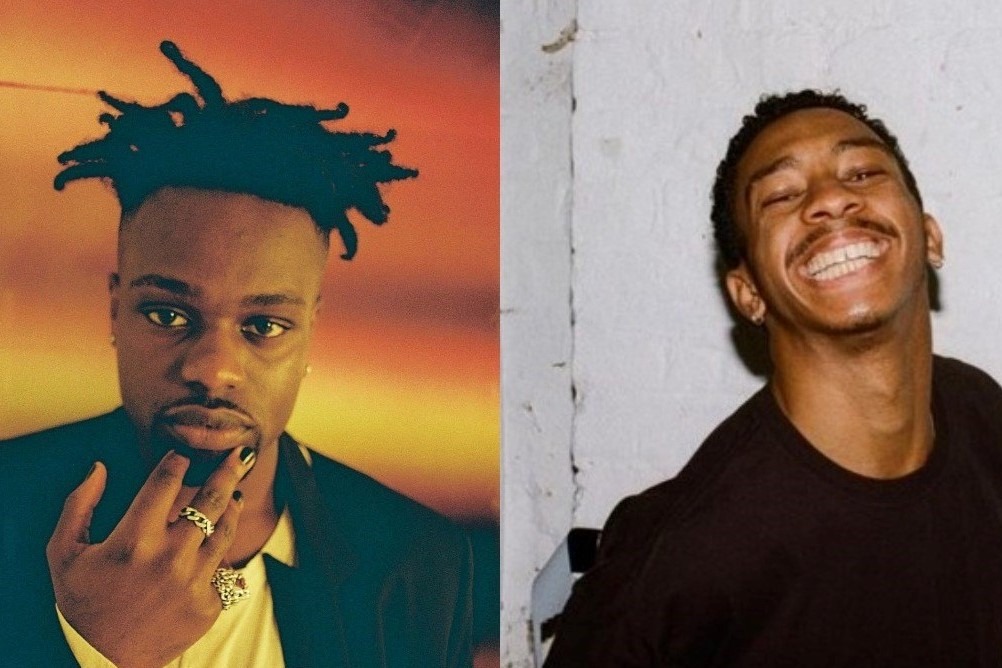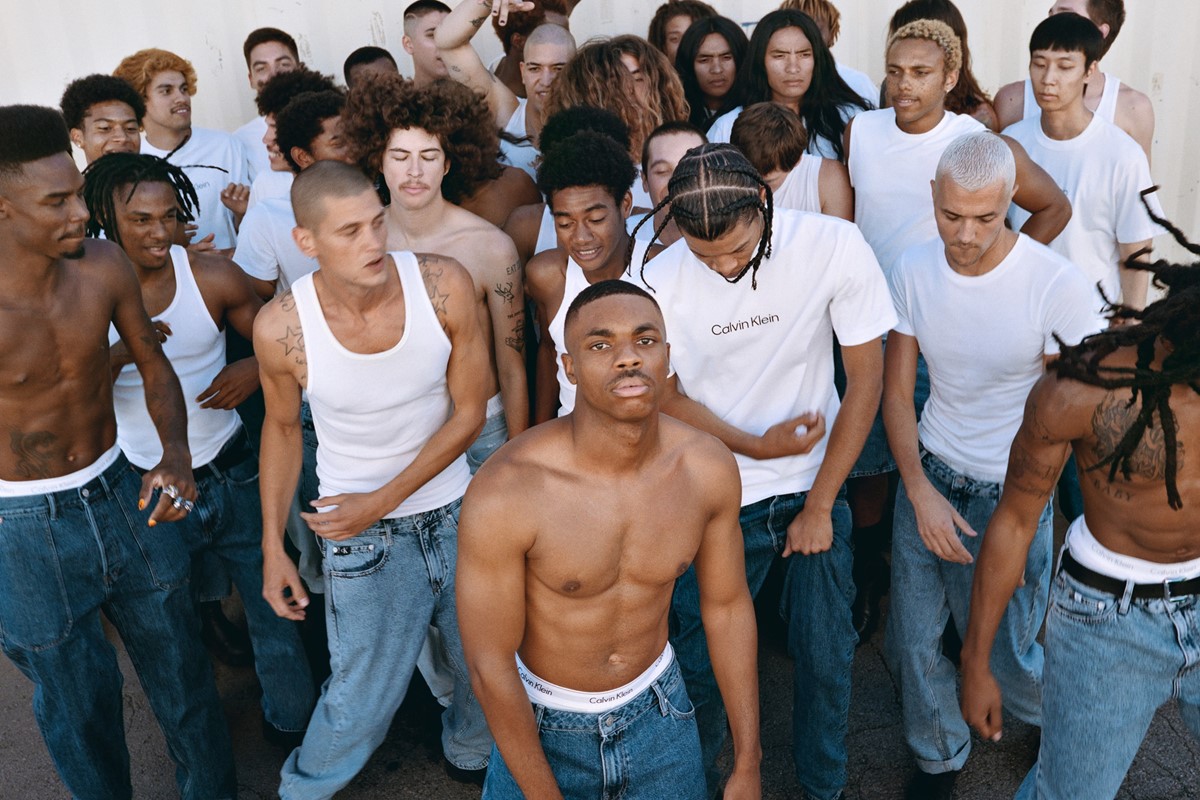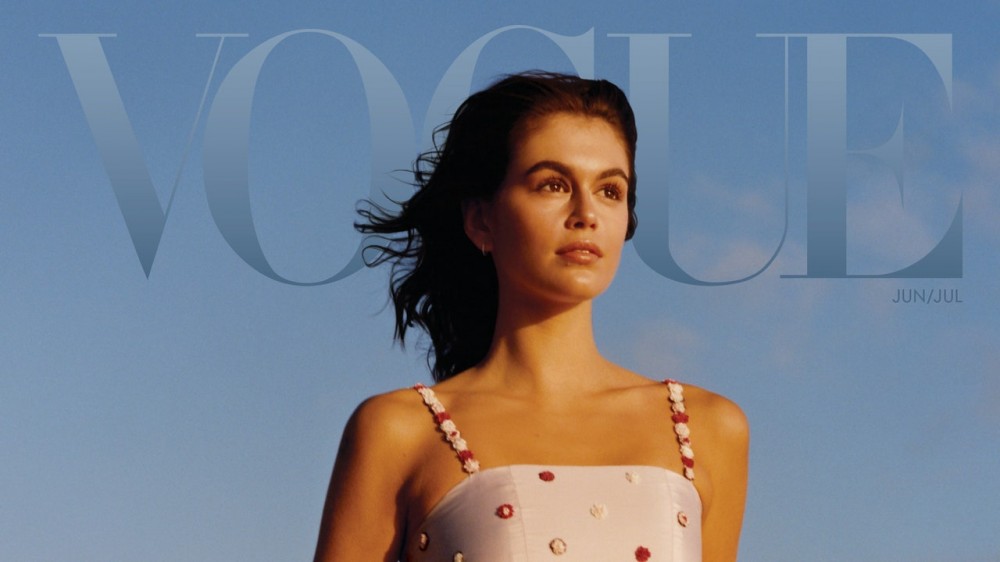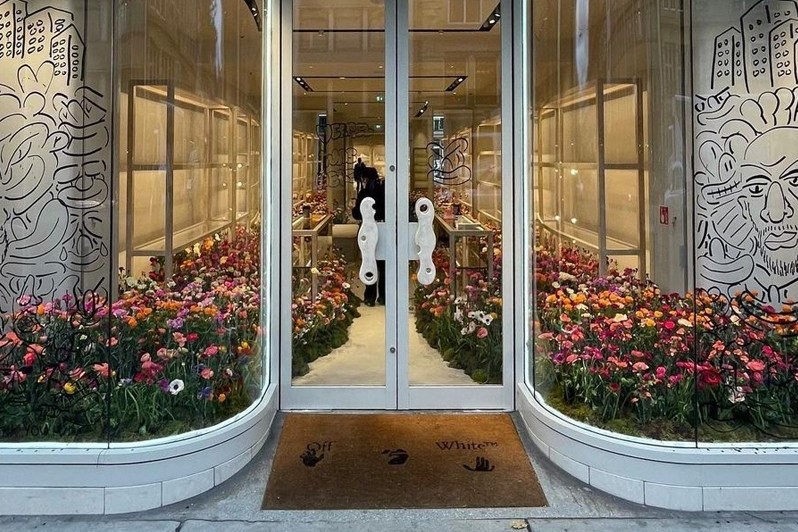
The rise and rise of Campbell Addy and Saul Nash
On the precipice of international renown, the photographer and designer travel through their journey so far, talking make-up tutorials, pipe dreams, and the realities of being a young creative in London
Studying at Central Saint Martins does not guarantee a career in the arts, nor does it miraculously birth generation-defining creatives. Though its reputation can be mapped on a constellation of world-class tutors and graduate superstars, it’s the friendships formed over the course of a degree that yield the most shine – with former students moving throughout the industry like a cabal, thronging from design studios in Tottenham, to London Fashion Week, to blockbuster maisons in Paris and Milan. The masthead of Dazed alone reads like a university prospectus, with editor-in-chief IB Kamara, art director Gareth Wrighton, and editorial director Kacion Mayers first collaborating while on Saint Martins’ Fashion Communication course.
The same goes for Saul Nash and Campbell Addy, who spent years chewing over their careers on “the bloody cold concrete steps” of Granary Square, only to become the proponents of a new wave of creative agenda-setters. In the past month alone, Addy launched his debut photo book, Feeling Seen, with a foreword written by Edward Enninful, while Nash bagged two major design accolades: the Queen Elizabeth II Award and the International Woolmark Prize. As distinct as their chosen pathways may be, the duo account much of their stratospheric success to each other. “Your friends are your family,” Addy says, “the people you should be working with are the people sitting next to you, on the bus, and in your town. When you come up with someone it’s a synergy – a meeting of minds.”




Today, there is a tendency to talk about art only for its self-serving qualities, for how it relates to trauma or personal identities, while romanticising ye olde collectives like the Bloomsbury Set or the YBAs. And yet Nash and Addy are testament to a contemporary vision of an artistic brotherhood, their bodies of work dovetailing with a nuanced documentary of queer and Black histories, constructing characters and worlds in which seemingly disparate groups of people can find themselves. “It’s exciting to tell the truth, reclaim ideas, and reinvent the narrative,” Nash says, “we all do such different things, but I think there’s a real expression of sensitivity there.” Though they “still kiki and talk about the same things we did six years ago,” nearly ten years after they enrolled at Saint Martins, Addy and Nash find themselves at the precipice of international renown.
Below, Campbell Addy and Saul Nash come together to travel through their journey so far, talking make-up tutorials, pipe dreams, and the realities of being a young creative in London.
Let’s take it back a little – do you remember when you guys met for the first time?
Campbell Addy: Yeah, let’s give the readers some context!
Saul Nash: There’s always been this air that we should know each other because we’ve always been in close proximity to similar people. But we actually met at Central Saint Martins. It must have been before we did the BA, though, on that summer course we did about ten years ago.
Campbell Addy: Ew, old. Yeah we’ve always been part of a wider, close-knit family. I feel like I’ve always just known you?
Saul Nash: We also worked together at the Tate and then we collaborated on some videos for Harrods. There’s this iconic picture that Campbell took of IB Kamara, him, and myself when we all had long crazy hair when we were students. Actually my first ever interview I did as a designer was written by Campbell for his magazine Niijournal.
Campbell Addy: Under the section young, gifted, and Black! Back then I just remember you feeling so frustrated between studying performance but wanting to do design. I mean, you were always welcome in fashion but look at you now! You’re amazing. What do you think inspired you to blur those lines?
Saul Nash: Growing up, I always thought I’d go into dance but there was a constant battle between that and the creative arts. Like, my art teacher and my dance teacher were always fighting about which summer school I’d go to. Hence me studying performance design. I was always obsessed with clothes and the way I looked, though, particularly in my area, I always liked to have the best clothes.
Was there a specific item of clothing that you loved wearing?
Saul Nash: White Air Forces. I remember going to Footlocker and always making sure I had them first out of my friends.
Campbell Addy: I hate to use this word but Saul has always had a swag to him. It wasn’t trendy, it was more intelligent.
Saul Nash: That’s how I met IB, because he said he liked my trousers. You know, even if you’re not studying fashion at Saint Martins you’re always thinking about how you present yourself. I remember I did a project on designing costumes and set for a dance performance but whatever I created was more fashion garments than costume. I was scared to admit it but that’s when I realised what I was actually interested in. I was in a dance company throughout my studies and our choreographer Toni Adigun always encouraged us to go against the grain. But also choreographers like Akram Khan and Hofesh Shechter were really inspirational, as well as the kind of men I grew up around. When I won the adidas prize at the Royal College of Art, designing for function just started making more sense. I had always worn sportswear and really understood that kind of clothing. It really took a lot of self discovery before carving out a career. What about you, Campbell?
Campbell Addy: If I really think about it my first inspiration was my family. Even though she was strict my mum allowed us to dress up as a kid and I had this obsession with Morpheus from The Matrix so she shaved my hair off and let me wear bright shirts, stick-on ties, and circle lenses. But only if she could take pictures! So from a young age I understood the sensibility of a snap photo or styling.
What’s been your most recent obsession?
Campbell Addy: YouTube make-up tutorials! I originally wanted to be a painter, when I discovered Chris Ofili, Tracy Emin, and Jenny Saville during my GCSEs I was just hooked. But when I was at Saint Martins it was IB that told me I was a photographer, not anything else. Now my inspirations come from real life. I can think of countless photoshoots Saul has inspired, for example. I’m very emotionally-led when it comes to my work and it stems from people like Emin. I remember bunking off school and going to Margate to read Strange Land just so I could be in the same area where she wrote it. I thought, if I’m ever going to be a visual artist I’d like it to be as vulnerable as her or Ofili. I grew up in a very weird era and town. You know, late 90s, south London, queer, Jehovah’s Witness… so there’s a lot of things I inhabit as a person and I think it would be a shame not to funnel that into my work. And, being a photographer of fashion, it’s important that people like Saul and I, those who don’t get to see themselves that often, get the opportunity to create. I want to create worlds, and I hope my images outlive everyone on this call.
Saul Nash: That’s interesting. Dance is all about creating a world but I moved into fashion because I wanted to create a conversation that went beyond the context of the performance space, something that could exist in society.
How do you think you have learned from each other?
Campbell Addy: From the day I met Saul I was like ‘Man, Saul talks so much’. But in a positive way, because I talk so much. I’m a lover of passion. It’s sexy when someone is really into something and it inspires me to be geeky. Even hearing Saul talk about Akram Khan, like, I remember you telling me about him before! Now I wanna Google him. Fashion doesn’t inspire fashion, so it’s always nice to learn from other people. Saul’s always stuck to his guns, he still dances, he vogues, he’s part of a house, he’s still a fashion designer. When it comes to my work it makes me want to lean into the nerdiest parts of myself. I’ve never said this to Saul and I need to meet him to have a whole debrief but when I first got signed to CLM I remember writing all these treatments about dance, and it came from conversations we’d had over the years, being at parties and stuff.
What’s the best party that you two have been to together?
Saul Nash: It’s definitely PDA.
Campbell Addy: Is that even a question?
Saul Nash: There’s a lot to say about Campbell’s work but what really inspires me is his work ethic. When Campbell wanted to create Niijournal there was nothing stopping him. He had a whole modelling agency! It’s infectious. I think you, as an individual, are so inspiring and I’m lucky I was around you at the right time.
Campbell Addy: You’re gonna make me cry.
Do you think there’s a dialogue that exists between your work?
Saul Nash: If I talk about us as friends, Campbell, IB, and myself, we all do such different things, but I think there’s an expression of identity and sensitivity. The queer community can see themselves in my work just like the men that I grew up around can. I think those subtle nuances exist in Campbell’s work, too. I remember your work at Somerset House, it had one of my cuffs in it, and I could relate to the subversion in that. You suggest things without them being in your face.
Campbell Addy: I think we’re all lovers of nuance. We come from cultures wherein nuance is everything. Like Saul talks about the Air Max – you don’t wanna crease those. That’s a subtlety that we bring into our work and I hate it when things are on the nose.
Saul Nash: That’s my constant battle with sportswear! How do I take that somewhere else? It’s exciting to make people look at things in a new way. There’s a lot of assumption around people, so it’s exciting to tell the truth, reclaim ideas, and reinvent the narrative.
Campbell Addy: Same with me. When I first started doing interviews people would always be like ‘Oh my god you have Black people in your pictures!’ but like, that’s just my life, I see myself everyday. We’re truth-tellers but we’re intellectualising it and pushing it further in every job we do. You can’t just do a story about Black queerness, it’s like, what are saying about it? I hate it when an artist just tells me something, as opposed to taking me on a journey. I want to work just as hard understanding a piece of art as the artist worked while creating it.
This is a question you both wanted to ask each other but when you think back to when you first started doing interviews, is there any advice you’d give to your younger self?
Campbell Addy: Respect myself more! I usually just ran with whatever the journalist said because I never thought it would actually, like, go anywhere. Also, as Saul has said, my work ethic was crazy – I was interning, running a magazine, an agency, and still going out. It took its toll and I nearly ended up in hospital. Slow down young Campbell, take your time. The best advice I ever got was ‘Your friends are your family’. The people you should be working with are the people sitting next to you, on the bus, in your town. When you come up with someone it’s synergy, it’s a meeting of minds.
Saul Nash: When I first started getting attention for my MA graduate collection I was always told not to say too much about what my work was about. To let the work speak for itself. But over time I’ve learnt to exercise honesty and embody who you are. Speak with confidence and be proud of what you’ve created.
You’ve both taken major strides in your professional careers recently. Another question you presented to each other asked how to stay grounded?
Saul Nash: Family, friends, my partner. What’s grounding is that I don’t go home to a mansion! I’m still in my city.
Campbell Addy: Same. We all still kiki and talk about the same things we did six years ago. Shade keeps you going. We giggle and come home to south London and play Playstation so it doesn’t go to our heads. It’s fab.
Saul Nash: The act of working hard can be grounding in itself. It’s a blessing because even though you’ve achieved something there’s still a greater goal – the glass ceiling is infinite.
Has there been a stand-out moment in your career that’s made you take a step back and appreciate the success?
Campbell Addy: I had that moment in 2021 when I went to Ghana and this kid came up to me in a cafe and said he really loved what I do. Because I’m still just a boy from Croydon who likes taking photos. It’s in those moments when I feel like I’m doing the work I always wanted to do, when my community outside of London and New York are following and seeing. Because when I was his age I had nobody to look up to, I had no clue. ‘Making it’ is such a redundant term, too. Are you happy? If so, you’ve made it.
Saul Nash: And also, we live in a time when the exterior doesn’t match the interior, you go onto Instagram and it looks as though everyone has made it. I’ve had lots of ‘Oh shit’ moments recently but I remember going to a dance battle and my friends admitting that they were originally sceptical of what I was doing but they said they’re really behind me. That meant a lot to me because they are my community.
Campbell Addy: People at uni didn’t understand it, either. Do you think that’s always going to be a conundrum in your journey as an artist?
Saul Nash: I think there’s a point where you have to not care, there are people who my work really resonates with and that’s the most important thing for me. Now I’m at a place where I’m doing what I love to do and I’m not really affected by whether people get it or not.
What annoys you most about being a young creative today?
Campbell Addy: Infrastructure, because I’ve suffered from a lack of mentorship. My first experiences of being on big sets were that of my own, and, even now, I’d still love to assist photographers. The passing of information is so vital, especially within the Black community, that’s why I mentor. I’m here as a transitional figure to move things forward. And I’m not gonna lie, it feels lonely being so young and grafting this much, I’ve not had a holiday in nearly six years. I’m trying to balance it out now but I miss my friends, I miss Saul. I know he won’t believe me, but I do.
Saul Nash: You think I don’t believe you? You’re so funny. Everything I learnt from school selling crisps I had to tap back into when running a brand. When I left college I had to learn that there are parts of the job that are just not fun, like day-to-day accounts, and my to-do list has 100 things on it. That’s something you don’t learn at uni. Like setting up a limited company and VAT.
Campbell Addy: That killed me! I’m dyslexic as hell and I remember watching YouTube videos on how to do this stuff while at the library at Saint Martins. Cultural studies is cool but we need business studies attached to it. We’re taught to be free-willed but then you have to create an invoice and you’re like ‘huh? what’s an invoice?’
What do you want to see each other do creatively in the next few years? Is there a specific project you’d like to see the other do?
Campbell Addy: Yes! I don’t know if I wanna talk about it in too much detail but I would love to see Saul create costumes for a film or a major ballet company – but not of the Western world. When I see you I will show you what I mean. And I would like a t-shirt that says ‘I’m with Saul’.
Saul Nash: Okay! Interesting, well you could just buy some of my clothes? I wanna see a Campbell Addy academy for aspiring creatives. A Campbell Addy gallery. There’s a lot I want to see but it’s more about what I wish for you.
Campbell Addy: Let’s link and sort it out? We can do anything! I just hope everything we talked about on those bloody cold concrete stairs in Saint Martins comes true. Go forth and conquer.



